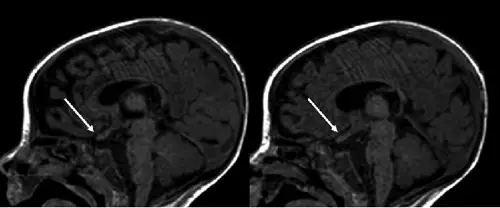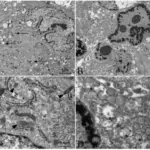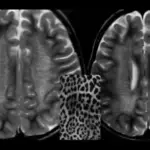Krabbe disease is an inherited disorder that destroys myelin in the brain and throughout the nervous system. Krabbe disease is due to deficiency of the enzyme galactocerebrosidase which is needed for the breakdown of the sphingolipids.
What is the Pathology of Krabbe Disease?
Etiology: The cause of Krabbe disease is the failure to break down the sphingolipids, resulting in degeneration of the myelin sheath.
Genes involved: Unknown.
Pathogenesis: In the case of Krabbe disease, two mutated copies of a particular gene result in little or no production of an enzyme called galactocerebrosidase.
Histology: The histology associated with Krabbe disease shows pathognomonic PAS+ globoid macrophages, extensive myelin and oligodendrocyte loss.
How does Krabbe Disease Present?
Patients with Krabbe disease typically are infants during the first 2 to 5 months of life. Males and females are equally affected. Common signs and symptoms early in the course of the disease include the following feeding difficulties, irritability, seizures, and frequent vomiting.
How is Krabbe Disease Diagnosed?
Krabbe disease is diagnosed by blood testing to assess the level of GALC enzyme activity.
How is Krabbe Disease Treated?
Krabbe disease has no cure if the infant is diagnosed with it. Treatment options focus on managing symptoms and providing supportive care.
What is the Prognosis of Krabbe Disease?
The prognosis of Krabbe disease is poor. On average, infants who develop Krabbe disease will die before 2 years old.



